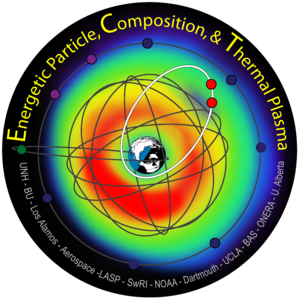Data Quality and Caveats for the REPT instrument
Known issues in Data Release 01 and 02
1 Lowest Electron Channel: Inner Belt
The lowest REPT electron channel, which measures 1.6-2.0 MeV electrons, has a difficulty discriminating the target range of electrons from the target range of low energy protons and is therefore highly susceptible to contamination by protons in the inner zone. Measurements are not valid under L∼2.8.
2 All Electron Channels: Inner Belt
For L-shell values less than ∼2.5, there is concern that all electron channels may show contamination by the presence of protons. Electron channels 2 and 3 (2.5-3.2 MeV and 3.2-4.0 MeV) were particularly vulnerable to this contamination by side-penetrating, high- energy protons prior to configuration changes implemented on 02 July 2013 (∼22 UT) for REPT-A and on 03 July 2013 (∼17 UT) for REPT-B. Fluxes in the outer belt were unaffected by this change, but in the inner belt ‘GCR proton shoulder’ region specifically, the contamination by protons appears diminished after these dates in these two electron channels. Note that all electron channels likely suffer from some contamination by the full range of inner zone protons, and thus all inner belt electron observations should be used in a qualitative manner. Work is in progress to achieve a more quantitative result.
3 Proton Channels: Outer Belt
There exists a slight amount of electron contamination in the proton channels during very high-flux times, caused by pileup events. This is most noticeable in the second proton channel (27.6 MeV), and only (so far) during the October storm(s) of 2012.
4 Electron and Proton: Integral Channels
The last energy bin in the proton channel measurements is an integral bin (E ≥ 116 MeV). Essentially, the last two bins in the electron measurements are integral bins as well (E ≥ 15 MeV and E ≥ 18.9 MeV).
5 Summary
No major changes to logic equations have taken place over the lifetime of the mission. No post-processing has been done yet on any public data, though a change may be implemented in the future to correct inner zone electron fluxes. Details will be announced when such a change has been made.







